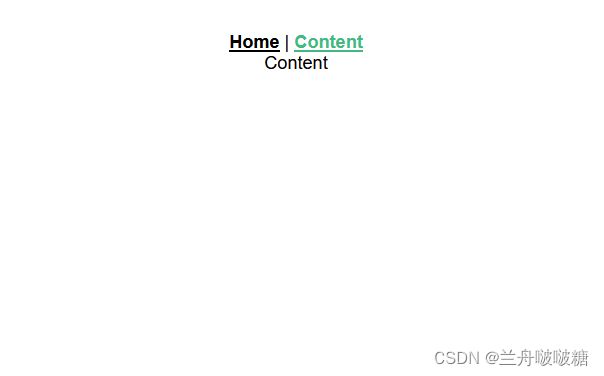【不使用vue-cli脚手架 搭建Vue2.0项目环境】
一、初始化
npm init -y
二、安装依赖
2.1生产环境依赖
npm install vue vue-router -S
2.2开发环境依赖
npm install babel-loader babel-core vue-loader node-sass sass-loader css-loader style-loader webpack webpack-cli webpack-dev-server html-webpack-plugin vue-template-compiler -D
一些依赖的作用:
babel-core的作用是把 js 代码分析成 ast ,方便各个插件分析语法进行相应的处理。有些新语法在低版本 js 中是不存在的,如箭头函数,rest 参数,函数默认值等,这种语言层面的不兼容只能通过将代码转为 ast,分析其语法后再转为低版本 js。首先安装 babel-core。
babel-loader作用:使用babel-loader处理js文件,会将es5以上的语法进行转义(无法转义es6 API) babel-loader必须和babel-core结合使用,babel-core封装了babel-loader需要用到的api
css-loader是帮助webpack打包处理css文件的工具
html-webpack-plugin
- 为html文件中引入的外部资源如
script、link动态添加每次compile后的hash,防止引用缓存的外部文件问题- 可以生成创建html入口文件,比如单页面可以生成一个html文件入口,配置N个
html-webpack-plugin可以生成N个页面入口
node-sass允许用户以令人难以置信的速度将.scss文件本地编译为css,并通过连接中间件自动编译。Sass是一种预处理器脚本语言,可以解释或编译成层叠样式表(CSS)
sass-loader就是为了转换和编译scss文件 node-sass是核心插件
style-loader是将css-loader打包好的css代码以六、在根目录创建并配置webpack.config.js文件
//webpack 是一个用于现代 JavaScript应用程序的静态模块打包工具。当 webpack处理应用程序时, //它会在内部构建一个依赖图(dependency graph),此依赖图对应映射到项目所需的每个模块,并生成一个或多个 bundle。 // loader 用于转换某些类型的模块,而插件则可以用于执行范围更广的任务。包括:打包优化,资源管理,注入环境变量。 //想要使用一个插件,你只需要 require() 它,然后把它添加到 plugins 数组中。 //多数插件可以通过选项(option)自定义。你也可以在一个配置文件中因为不同目的而多次使用同一个插件,这时需要通过使用 new 操作符来创建一个插件实例。 const path = require('path') const webpack = require('webpack') const HtmlWebpackPlugin = require('html-webpack-plugin') const { VueLoaderPlugin } = require('vue-loader') const config = { //入口文件 入口起点(entry point)指示webpack应该使用哪个模块,来作为构建其内部 依赖图(dependency graph) 的开始。 //进入入口起点后,webpack 会找出有哪些模块和库是入口起点(直接和间接)依赖的。 entry: path.join(__dirname, 'src/main.js'), //输出文件 output 属性告诉 webpack 在哪里输出它所创建的 bundle,以及如何命名这些文件。 output: { filename: 'bundle.js',//filename: 配置输出文件名,可添加路径配置(例子中js/) path: path.join(__dirname, 'dist')//path: 文件的输出路径,必须是绝对地址 }, //通过选择 development(生产模式), production(开发模式)或 none 之中的一个,来设置 mode 参数,你可以启用 webpack 内置在相应环境下的优化。 //其默认值为 production。 mode: 'development', // 设置mode, module: { rules: [ { test: /\.vue$/,//test 属性,识别出哪些文件会被转换。 use: 'vue-loader',// use 属性,定义出在进行转换时,应该使用哪个 loader。 }, { test: /\.css$/, use: ['style-loader', 'css-loader'] }, { test: /\.scss$/, use: ['style-loader', 'css-loader', 'sass-loader'] }, ] }, plugins: [ new VueLoaderPlugin(), //生成html页面并导入bundle.js,如果配置了filename则以项目中filename指定的html为模版 new HtmlWebpackPlugin({ filename: 'index.html', template: 'index.html', inject: true, }) ] } module.exports = config最后npm run dev 页面效果为
-----------------------------------------分割线-------------------------------------------------
接下来是添加vuex axios element-ui等
七、vuex
7.1安装vuex
npm install vuex7.2使用vuex
在main.js中注入vuex
import Vuex from 'vuex' import store from "./store"; new Vue({ el: '#app', router, store, render: h => h(App) })一个完整的项目示例
(转载于:https://blog.csdn.net/Ed7zgeE9X/article/details/112165249)
index.html
<html> <head> <meta charset="utf-8" /> <meta http-equiv="X-UA-Compatible" content="IE=edge,chrome=1" /> <meta name="viewport" content="width=device-width, initial-scale=1.0, maximum-scale=1.0"> <title>Vuex Example - Jump Start Vue.jstitle> <link rel="stylesheet" type="text/css" href="https://cdnjs.cloudflare.com/ajax/libs/semantic-ui/2.3.1/semantic.min.css"> <style type="text/css"> body { background-color: #FFFFFF; } .ui.menu .item img.logo { margin-right: 1.5em; } .main.container { margin-top: 7em; } style> head> <body> <div id="app">div> body> html>App.vue
src/store/index.js
import Vue from "vue"; import Vuex from "vuex"; import axios from "axios"; Vue.use(Vuex); export default new Vuex.Store({ state: { users: [], selectedUserId: null, isFetching: false }, mutations: { setUsers(state, { users }) { state.users = users; }, setSelectedUser(state, id) { state.selectedUserId = id; }, setIsFetching(state, bool) { state.isFetching = bool; } }, getters: { selectedUser: state => state.users.find(user => user.login.uuid === state.selectedUserId) }, actions: { fetchUsers({ commit }) { commit("setIsFetching", true); return axios .get("https://randomuser.me/api/?nat=gb,us,au&results=5&seed=abc") .then(res => { setTimeout(() => { commit("setIsFetching", false); commit("setUsers", { users: res.data.results }); }, 2500); }) .catch(error => { commit("setIsFetching", false); console.error(error); }); } } });src/views/Home.vue
<template> <div class="ui main text container"> <h1 class="ui header">Vuex 数据管理</h1> <p>This is a basic Vuex example app, to demo the concepts learned in the ➥accompanying chapter.</p> <p>Go to <router-link to="/about">About</router-link></p> </div> </template> <script> export default { name: "home" } </script>src/views/About.vue
<template> <div class="ui main text container"> <h1 class="ui header">About</h1> <div class="ui active inverted dimmer" v-if="isFetching"> <div class="ui text loader">Loading</div> </div> <ul v-else> <li v-for="(user, index) in users" :key="index"> <router-link :to="{ name: 'about', params: { id: user.login.uuid }}"> {{ user.name.title }} {{ user.name.first }} {{ user.name.last }} </router-link> </li> </ul> </div> </template> <script> import { mapState } from "vuex"; export default { name: "About", computed: { ...mapState([ 'isFetching', 'users' ]) } } </script> <style> li { text-transform: capitalize; } </style>src/views/demo.vue
<template> <div class="ui main text container" v-if="selectedUser"> <div class="ui items"> <div class="item"> <div class="image"> <img :src="selectedUser.picture.large"> </div> <div class="content"> <a class="header">{{ fullName }}</a> <div class="meta"> <span>{{ selectedUser.email }}</span> </div> <div class="description"> <p>{{ selectedUser.location.street }}, {{ selectedUser.location.city }}, {{ selectedUser.location.state }}, {{ selectedUser.location.postcode }} </p> </div> <div class="extra"> {{ selectedUser.phone }}<br /> {{ selectedUser.cell }} </div> </div> </div> </div> </div> </template> <script> import { mapGetters, mapMutations } from "vuex"; export default { name: "Users", computed: { ...mapGetters(["selectedUser"]), fullName() { return `${this.selectedUser.name.first} ${this.selectedUser.name.last}`; } }, methods: { ...mapMutations(["setSelectedUser"]) }, created() { const userId = this.$route.params.id; this.setSelectedUser(userId); } }; </script> <style scoped> a.header, p { text-transform: capitalize; } </style>src/router/index.js
import Vue from "vue"; import Router from "vue-router"; import Home from "./views/Home.vue"; import About from "./views/About.vue"; import Demo from "./views/Demo.vue"; Vue.use(Router); export default new Router({ mode: "history", linkActiveClass: "active", routes: [ { path: "/", name: "home", component: Home }, { name: "about", path: "/about", component: About }, { name: "demo", path: "/about/:id", component: Demo } ] });八、axios
8.1安装axios
npm install axios -S在main.js 中引入
import axios from 'axios'九、引入element-ui
9.1全局引入
npm install element-ui -S在main.js中写入
import Vue from 'vue'; import ElementUI from 'element-ui'; import 'element-ui/lib/theme-chalk/index.css'; import App from './App.vue'; Vue.use(ElementUI); new Vue({ el: '#app', render: h => h(App) });9.2按需引入
npm install element-ui -S npm install babel-plugin-component -D在根目录中创建文件.babelrc
{ "presets": [["es2015", { "modules": false }]], "plugins": [ [ "component", { "libraryName": "element-ui", "styleLibraryName": "theme-chalk" } ] ] }在main.js中引入
import Vue from 'vue'; import 'element-ui/lib/theme-chalk/index.css' import { Button, Card } from 'element-ui' import App from './App.vue'; Vue.use(Button) Vue.use(Card) new Vue({ el: '#app', render: h => h(App) });


 Jump Start Vue.js
Jump Start Vue.js